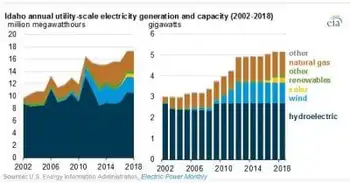California green push to staunch job losses: study
By Reuters
NFPA 70e Training - Arc Flash
Our customized live online or in‑person group training can be delivered to your staff at your location.

- Live Online
- 6 hours Instructor-led
- Group Training Available
The most populous U.S. state leads the nation with its plan to cut carbon dioxide emissions to 1990 levels by 2020 with measures from encouraging energy efficiency to getting a third of state electricity from renewable sources such as wind and solar. But the plan is under attack from businesses and some academics who say the costs of going green will bankrupt many enterprises.
The state's decisions are also likely to affect the country at large, since federal policy often follows California's lead on environmental issues, from vehicle standards to plans passed in the state and being debated in the U.S. Congress to cap emissions and let companies trade credits to pollute.
Rising fossil fuel prices would cut state economic output by $84 billion and slash 626,000 jobs from state payrolls in 2020, if U.S. Department of Energy fuel forecasts are used instead of the outlook by the state energy commission, according to the study by economist David Roland-Holst of the University of California, Berkeley.
But the move to get a third of state electricity from renewables and become more efficient would reverse the decline, the study added. Instead, 2020 economic output would rise $20 billion from current projections and 112,000 jobs would be created.
Forecasts swing dramatically, like energy prices, though, and the study — funded by environmental economics nonprofit Next 10 — argued that renewable prices will not jump since there is no practical limit to the amount of solar and wind energy to be harnessed. Oil supply, by comparison, is limited.
Prices of solar panel components have swung widely in the last couple of years as demand for solar power has changed with the economy. A major deficit has turned into a glut. Natural gas prices will also be key to electricity costs, and vast new finds in recent years have created a surplus.
The broader trend of a drop in the price of photovoltaic solar, the familiar solar panels, was likely despite fluctuating demand, Roland-Holst said, and that technology could radically cut the costs of solar and other alternative energy.











